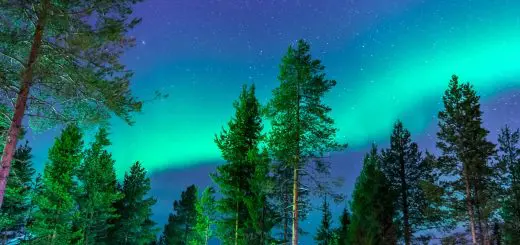Vampires in Folklore: Myths Across Cultures

Looking for more amazing products? Check out our online store and explore our collection here! Happy shopping!
Before diving in, please note: This post is for informational purposes only. If you’d like to know more about how we approach topics, feel free to check out our friendly Disclaimer Page.
Hey there, amazing readers! 
We’re committed to delivering quality posts, and your support (even just sticking around despite the ads) means everything to us. So, bear with us, and thanks for helping us keep the good vibes rolling. Now, on to the fun stuff!
TRANSLATE BUTTON AT THE END OF THE ARTICLE
A Quick Overview
Vampires have long haunted the human imagination, weaving their way into folklore across cultures and continents.
These mythical beings evoke a mix of fear and fascination, often embodying themes of death, immortality, and desire.
Whether they lurk in the shadows of ancient tales or dance across modern screens, the variety of vampire stories reveals much about the societies that birthed them.
In this exploration of vampires in folklore, I’ll take you on a journey through different cultures, highlighting their unique legends, the role they play in society, and their evolution through literature and media.
The Origins of Vampires in Global Folklore
Vampires are often considered a universal archetype, with roots that can be traced back to ancient civilizations.
They symbolize humanity’s fears—of death, illness, and the unknown.
The word "vampire" itself comes from the early 18th-century French term "vampyre," which has Slavic origins.
However, the essence of blood-drinking entities appears long before that.
In many cultures, tales of the dead rising to consume the living can be found.
These narratives served important functions, such as explaining diseases and sudden deaths.
For instance, when a mysterious illness struck a community, it was easy to blame it on a returned spirit.
In this context, vampires often acted as a societal mirror, reflecting our deepest anxieties.
The traits of vampires vary widely—some are portrayed as seductive and enticing, while others are terrifying and monstrous.
These differences often depend on cultural contexts.
In many traditions, the presence of a vampire indicates a disruption of the natural order.
This disruption can stem from improper burial rites, unfulfilled vows, or untimely death.
What’s particularly captivating is how these myths often overlap.
Cultures that had little contact still developed similar legends, suggesting that the fear of the undead is deeply embedded in human psyche.
Each culture’s vampire story holds a distinct flavor that ties to local beliefs and experiences.
Ancient Mesopotamia: The First Bloodsucking Legends
The cradle of civilization, Mesopotamia, is home to some of the earliest narratives involving bloodsucking entities.
The renowned figure of the "Lamashtu," a female demon, is often depicted as preying on pregnant women and infants.
She was said to suck the blood of children, embodying the fears surrounding childbirth and infant mortality.
Lamashtu’s legends reveal a lot about societal fears of the time.
People were understandably terrified of losing their loved ones, especially in a world where child mortality rates were high.
By creating a myth around such fears, the Mesopotamians were able to make sense of their suffering.
In addition to Lamashtu, the "ekimmu" was another entity feared by the ancient peoples of Mesopotamia.
Considered to be the restless spirits of the dead, ekimmu were said to return from the netherworld.
Their aim?
To haunt the living and, in some stories, to extract life-force or blood from those who wronged them.
These early tales laid the groundwork for future vampire myths, emphasizing the connection between death and the desire for vitality.
Mesopotamian stories remind us that the fear of the undead isn’t a new phenomenon; it has haunted societies for millennia.
European Vampires: From Dracula to Modern Myths
European vampire lore is perhaps the most recognizable, thanks in large part to Bram Stoker’s iconic novel "Dracula." The character of Count Dracula has become synonymous with the vampire archetype, blending the alluring with the grotesque.
Yet, the roots of European vampire myths extend far deeper than Stoker’s classic.
Across various European cultures, stories abound of creatures that share vampiric traits.
In Slavic regions, for instance, the "vampir" is a reanimated corpse that rises from the grave, often to haunt its family.
This belief led to countless superstitions surrounding burial practices and the treatment of the dead.
Interestingly, the vampire was often a reflection of societal issues.
During the plague years, the undead were sometimes blamed for disease outbreaks.
They became scapegoats for societal fears surrounding death and illness.
As a result, vampire hunts became a grim reality in some communities.
The vampire’s evolution in European folklore showcases how cultural shifts affect mythology.
In the 19th century, romanticism breathed new life into vampire lore.
Suddenly, vampires were not just monsters; they became tragic anti-heroes, representing the struggle between desire and morality.
This duality continues to resonate in modern interpretations.
Asian Perspectives: Chinese and Japanese Vampire Tales
When we shift our gaze to Asia, we encounter a rich tapestry of vampire legends that differ significantly from their Western counterparts.
In Chinese folklore, the "jiangshi," or “hopping vampire,” emerges as a fascinating figure.
This reanimated corpse, often portrayed as stiff and unable to move smoothly, hops to chase down its victims, draining their life essence.
The concept of the jiangshi illustrates a unique cultural perspective on death and the afterlife.
It reflects the importance of proper burial rites in Chinese society.
When a body is not buried correctly, the person may return as a jiangshi, ultimately leading to tragedy for the living.
In Japan, the "kappa" and "rokurokubi" offer intriguing variations to traditional vampire themes.
The kappa, a creature that resembles a turtle, is known for luring people into the water and feasting on their blood.
Meanwhile, the rokurokubi is a creature with a human form by day and a wandering head by night.
These tales, while not strictly vampires, share similarities in their themes of blood and transformation.
Asian vampire legends emphasize the importance of rituals and respect for the dead.
They often serve cautionary purposes, teaching lessons about morality and the consequences of neglecting societal duties.
African Folklore: Bloodsuckers from the Heart of Africa
In Africa, vampire-like entities vary greatly across different cultures.
One notable figure is the "asiman," a bloodsucking demon from West African folklore.
The asiman can take on many forms, often appearing as a beautiful woman who lures men before draining their life force.
This creature embodies the fears surrounding seduction and betrayal.
In some East African cultures, the "popobawa" has plagued villages.
This shape-shifting creature is known for its aggressive behavior, attacking people in their sleep and feeding on their fear.
The popobawa legend acts as a social commentary on the dangers lurking within communities, often representing societal issues like violence and betrayal.
Moreover, the "impundulu" or lightning bird from Zulu mythology is another entity that exhibits vampiric traits.
This mythical creature is said to possess the ability to suck blood and bring thunderstorms.
Folklore surrounding the impundulu reflects connections between nature and human experiences, showing how traditional beliefs often intersect with environmental elements.
African vampire legends highlight the diverse ways communities interpret fears and concerns.
They often serve as cautionary tales, reminding us of moral values and community dynamics.
The Role of Vampires in Native American Stories
Native American cultures have their own unique perspectives on vampiric entities.
The "chindi," for instance, represents a ghostly spirit that haunts the living, often associated with the dead’s unresolved issues.
While not a traditional vampire, the chindi embodies many of the same fears surrounding death and the afterlife.
In some tribal stories, there are creatures resembling vampires that feed on the essence of humans.
The myth of the "wendigo," a malevolent spirit from Algonquian folklore, tells of a being that craves human flesh and blood.
This tale embodies the dangers of greed and excess, demonstrating how vampire myths can serve as moral lessons.
The interplay between nature and the supernatural is significant in Native American lore.
Vampires and other supernatural entities often represent the consequences of human actions and the importance of living in harmony with nature.
South American Legends: Chupacabra and Beyond
When it comes to South America, the legend of the "Chupacabra" stands out.
This creature, which translates to "goat-sucker," is said to drain the blood of livestock, leaving behind lifeless bodies.
The chupacabra emerged in the 1990s and quickly became a modern folklore phenomenon.
The chupacabra highlights the cultural significance of fear surrounding livestock and agricultural life.
Farmers, faced with inexplicable livestock deaths, created a creature that could explain their woes.
The creature’s shape-shifting nature resonates with the duality of predator and prey, making it a compelling figure in South American folklore.
In addition to the chupacabra, some indigenous cultures have tales of vampiric beings that feed on human blood.
These stories often serve as cautionary tales about the dangers of straying too far from one’s community or disregarding traditional values.
South American vampire legends are layered with societal commentary, representing local customs, fears, and values.
Vampires in Slavic Culture: The Powerful Strigoi
In Slavic folklore, the "strigoi" is a prominent figure steeped in mystery and fear.
These beings are said to rise from the grave, exhibiting traits of both vampires and ghosts.
Strigoi can be either living or dead, often possessing the ability to transform into animals or become invisible.
The strigoi reflects the Slavic fear of the undead, often associated with improper burial rites or unresolved issues in life.
These tales reveal the cultural importance placed on honoring the dead, emphasizing that failure to do so can lead to dire consequences.
In some narratives, strigoi can be warded off using garlic, holy water, or specific rituals.
These protective measures highlight the community’s desire to maintain order and combat the chaos that undead beings represent.
Unlike the romanticized vampires of modern culture, strigoi are often portrayed as grotesque and terrifying.
They serve as reminders of mortality and the natural cycle of life and death.
The Influence of Literature on Vampire Myths
Literature has played a pivotal role in shaping our understanding of vampires.
From ancient texts to modern novels, written word has given voice to these enigmatic beings.
Bram Stoker’s "Dracula" was groundbreaking, establishing many tropes we associate with vampires today—like their seductiveness and supernatural powers.
Following Stoker, writers like Anne Rice and Stephen King further expanded the vampire mythos.
Rice’s "The Vampire Chronicles" humanized vampires, exploring their inner struggles and desires.
King’s "Salem’s Lot" returned to the horror roots, reminding us of the fear and dread that vampires can inspire.
These works paved the way for a resurgence of interest in vampire themes across genres.
They transformed vampires from mere monsters into complex characters who evoke both empathy and fear.
The evolution of vampire literature reflects changing societal values and norms.
Aspects such as sexuality, identity, and morality become intertwined with vampire narratives, leading to rich and diverse interpretations.
Modern Media: Vampires in Film and Television
Vampires have made a significant impact on modern media, especially in film and television.
The classic black-and-white films of the early 20th century laid the groundwork for horror cinema. "Nosferatu," released in 1922, remains a cult classic, showcasing the eerie and unsettling nature of vampires.
Fast forward to today, and we see a plethora of vampire narratives in TV series like "Buffy the Vampire Slayer," "True Blood," and "The Vampire Diaries." These shows have redefined vampires, making them more accessible and relatable to contemporary audiences.
The blending of genres—horror, romance, and even comedy—has allowed for a wide range of interpretations.
Modern vampires often grapple with issues of morality, identity, and acceptance, making them more than just creatures of the night.
The portrayal of vampires in media reflects societal trends and changes in attitudes.
As we embrace themes of diversity and complexity, so too do our vampires evolve.
They mirror our own struggles and desires, creating a cultural phenomenon that continues to captivate audiences.
Fun and Quirky Vampire Creatures Around the World
Vampire legends aren’t all doom and gloom; many cultures have quirky interpretations of these bloodsuckers.
For example, in the Philippines, the "aswang" is a mischievous creature that can transform into various animals.
While it often has vampiric traits, it’s also known for stealing food and creating mischief.
In Indonesia, the "penanggalan" is a woman who detaches her head at night, leaving behind her entrails to fly around in search of blood.
This disturbing yet fascinating legend adds a unique twist to traditional vampire tales.
Additionally, in certain cultures, the notion of "blood-drinking" is not always negative.
In some traditions, sharing blood signifies bonding and connection.
These perspectives challenge the conventional understanding of vampires, reminding us that myths can be fluid and multifaceted.
These fun and quirky vampire stories enrich the tapestry of folklore, highlighting the creativity and imagination of different cultures.
The Enduring Allure of Vampires in Today’s Culture
Vampires have a timeless allure that continues to resonate with people around the globe.
Their ability to embody our fears and desires has solidified their place in our collective consciousness.
Whether through literature, film, or folklore, vampires challenge us to confront our mortality and the darker aspects of human nature.
Moreover, the metamorphosis of vampire narratives reflects societal changes.
Today, we are drawn to stories that emphasize empowerment and identity, allowing us to explore themes of belonging and acceptance.
Vampires, once seen purely as monsters, have transformed into symbols that evoke empathy and understanding.
As we continue to create and consume vampire stories, we engage in a dialogue about our values, fears, and aspirations.
The allure of vampires may lie not only in their supernatural powers but in their capacity to reflect the complexities of the human experience.
Conclusion
Vampires, with their enigmatic charm and deep cultural roots, serve as a fascinating lens through which we can examine human fears, societal norms, and the complexities of life and death.
From ancient legends to modern interpretations, these creatures have evolved and adapted, continually capturing our imagination.
As we explore vampire myths across cultures, we uncover not only the stories of the undead but also reflections of our own lives, struggles, and desires.
So, whether you’re a fan of horror films or simply intrigued by folklore, there’s no denying that vampires will remain an integral part of our cultural landscape for years to come.

The Enlightenment Journey is a remarkable collection of writings authored by a distinguished group of experts in the fields of spirituality, new age, and esoteric knowledge.
This anthology features a diverse assembly of well-experienced authors who bring their profound insights and credible perspectives to the forefront.
Each contributor possesses a wealth of knowledge and wisdom, making them authorities in their respective domains.
Together, they offer readers a transformative journey into the realms of spiritual growth, self-discovery, and esoteric enlightenment.
The Enlightenment Journey is a testament to the collective expertise of these luminaries, providing readers with a rich tapestry of ideas and information to illuminate their spiritual path.
Our Diverse Expertise
While our primary focus is on spirituality and esotericism, we are equally passionate about exploring a wide range of other topics and niches 

To ensure we provide the most accurate and valuable insights, we collaborate with trusted experts in their respective domains 
Our blog originally focused on spirituality and metaphysics, but we’ve since expanded to cover a wide range of niches. Don’t worry—we continue to publish a lot of articles on spirituality! Frequently visit our blog to explore our diverse content and stay tuned for more insightful reads.
Hey there, amazing reader! 
Check out our store here and take a peek at some of our featured products below! Thanks for being awesome!













